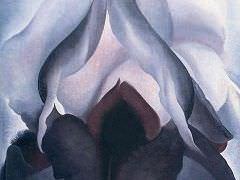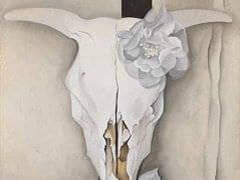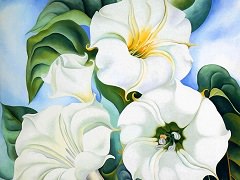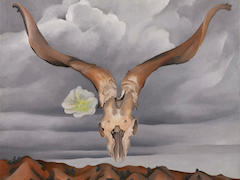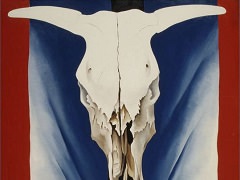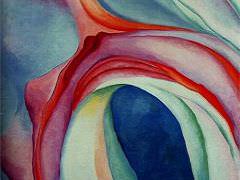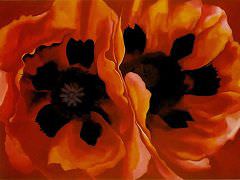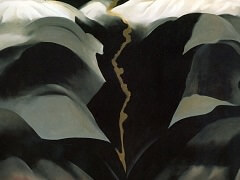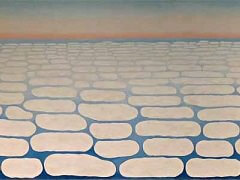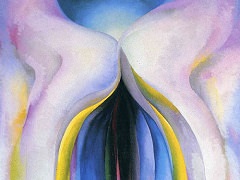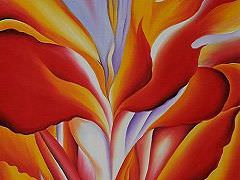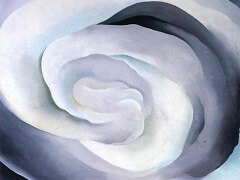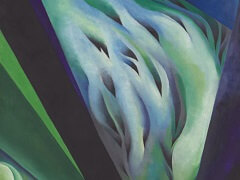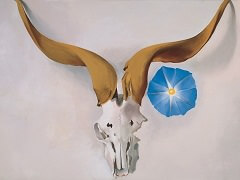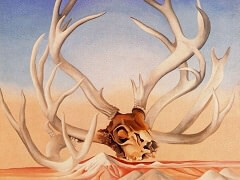The White Calico Flower, 1931 by Georgia OKeeffe
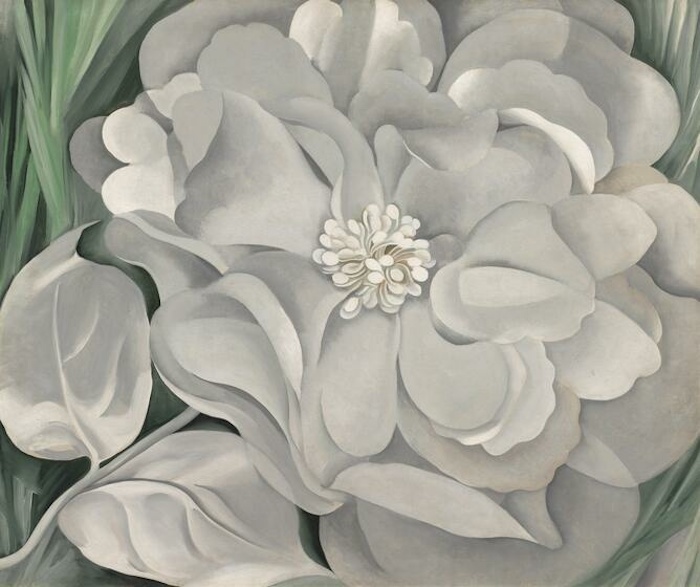
Georgia O'Keeffe was greatly influenced by Arthur Wesley Dow, with whom she studied composition for two years at Columbia Teachers College. In his art book, Compositions, Dow told students to paint,
not a picture of the flower... that can be left to the botanist, - but rather an irregular pattern of lines and spaces, something far beyond the mere drawing of a flower from nature".
Liberated by Dow's unique approach to art, O'Keeffe took the notions of going "beyond the mere drawing of a flower" to dazzling extremes. In her large floral designs, O'Keeffe not only catches the 'still object' - canvases swimming with swirls of voluptuously curved, pulsating with color - but also seems to dive into the very heart of the flower itself, pulling the viewer in with her.
Dow also stressed the importance of an "oriental aesthetic", in particular, the Japanese concept of notan, where a painting is composed using balance values of lights and darks. In many O'Keeffe floral paintings, especially The White Calico Flower, so reminiscent of Hokusai's The Great Wave off Kanagawa, Dow's "orientalizing" influence is clearly evident. O'Keeffe would attribute Dow's measured but decorative approach to composition as the basis for her lifelong personal and professional compulsion to 'fill a space in a beautiful way.'

